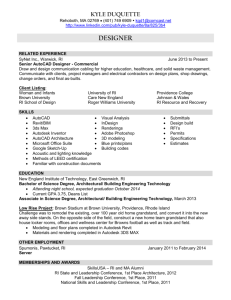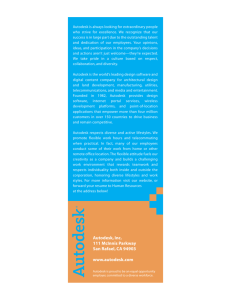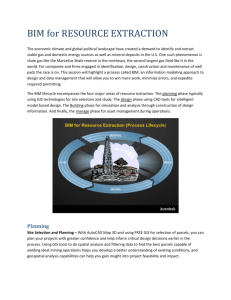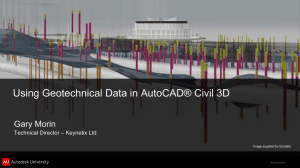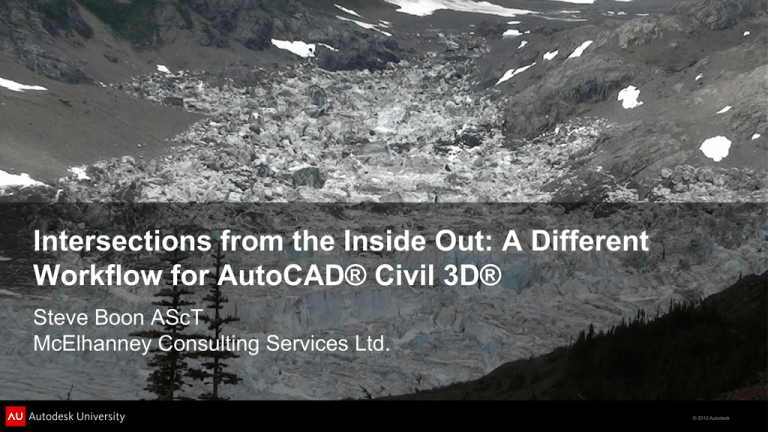
Intersections from the Inside Out: A Different
Workflow for AutoCAD® Civil 3D®
Steve Boon AScT
McElhanney Consulting Services Ltd.
© 2012 Autodesk
Class Summary
The design of roadways is typically based on the development of an
alignment, then a profile, and finally a typical section. Many users who
design intersections, ramps, or widenings run into difficulties because the
process in AutoCAD Civil 3D software assumes that the road edge profile
is designed semi-independently of the two centerlines. In this class, you
will learn a technique that allows the use of the classic alignment–profile–
section process to design a widening, a ramp, or the turning lanes of an
intersection. This technique can be used for all types of corridors where
the pavement edge elevations are to be controlled by a specified crossfall
from another profile or surface.
© 2012 Autodesk
Learning Objectives
At the end of this class, you will be able to:
Use superelevation parameters to aid in the design of curb return.
Build assemblies which allow you to match a lane widening to an existing
surface and crossfall.
Build assemblies for the design of ramps which transition from another
lane edge through a gore to an independent lane
Put all of the pieces together in a corridor model
© 2012 Autodesk
The “Old School”
aka
Spot Elevations
© 2012 Autodesk
A Simple Intersection
•
•
•
•
Use the Intersection Wizard to create the offset alignments and the curb return alignments.
Add superelevation data to the curb return alignments.
Build an assembly using a generic link to the left, then roadway subassemblies to the right.
Add baselines and regions to your corridor, to put all of the pieces together.
From this
To this
And finally this
© 2012 Autodesk
A Complex Intersection
Issues which affect the design:
•
•
•
•
•
Poor sightlines from the west
An existing superelevated curve along the highway.
Existing facilities which must be accommodated.
Design vehicles which require extra space to the side when they make a turn.
Existing fill slopes to the northeast with poor soil conditions which must be avoided.
© 2012 Autodesk
Ramps and Gores
The technique is the same as we have seen previously but the application is a little different. The freeway shoulders and
the ramp tapers are built outward from the edge of the through lanes, and then the ramp profiles are tied into the surface.
© 2012 Autodesk
Autodesk, AutoCAD* [*if/when mentioned in the pertinent material, followed by an alphabetical list of all other trademarks mentioned in the material] are registered trademarks or trademarks of Autodesk, Inc., and/or its subsidiaries and/or affiliates in the USA and/or other countries. All other brand names, product
names, or trademarks belong to their respective holders. Autodesk reserves the right to alter product and services offerings, and specifications and pricing at any time without notice, and is not responsible for typographical or graphical errors that may appear in this document. © 2012 Autodesk, Inc. All rights
reserved.
© 2012 Autodesk

